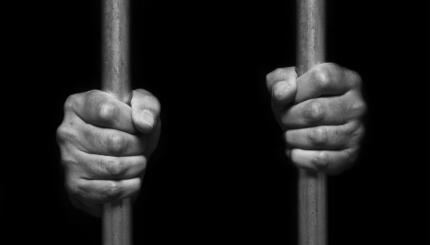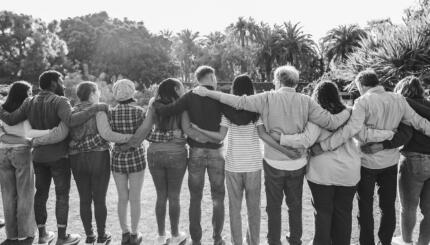Jewish prayer features an elaborate tradition of texts and accompanying actions that have roots in the practices of the Holy Temple in Jerusalem, and perhaps in traditions of prayer outside the Temple. These rituals were shaped most fundamentally, by the rabbis of the generations immediately after the destruction of the Second Temple in 70 CE. Those sages established the outlines of prayer: three daily worship services (with the addition of the Musaf or “additional” service on Shabbat and festivals) and their contents, which–with only minor changes–have been the basis of Jewish prayer for two millennia.
For individuals and communities, there is a challenge in performing a formalized liturgy. How does one express one’s own inner feelings and thoughts in such a situation? How does one prevent the inherent repetition from having a numbing effect on one’s ability to freshly perceive the words and their meaning? Many innovations in both text and music over the centuries have addressed this issue, including short introductions (kavvanot), additional poetry, and cantorial and congregational music composed for the texts.
The exact texts and the details of their usage vary among different Jewish communities. These variations are often local, but several regional traditions can be discerned. One such ethnic cluster, using the Sephardic rite, consists of communities of Jews whose ancestors lived on the Iberian peninsula until their expulsion and dispersion in the last decade of the 15th century. The Ashkenazic rite is shared by the descendants of Jews whose ancestors lived in western and central Europe, mostly migrated to Eastern Europe, and have been migrating westward since the mid-17th century.
The Jews of the Muslim world–North Africa and the Middle East–constitute a fairly closely related set of “eastern communities,” from which the traditions of the Jews of Yemen stand apart as a distinct rite. Smaller ethnic divisions exist, such as the native Italian rite (followed by some Italian Jews) and the Romaniote rite of the Jews of the Balkans (now in disuse).

Help us keep Jewish knowledge accessible to millions of people around the world.
Your donation to My Jewish Learning fuels endless journeys of Jewish discovery. With your help, My Jewish Learning can continue to provide nonstop opportunities for learning, connection and growth.
Most of Jewish prayer can be recited by a lone individual, but certain key prayers require the presence of a quorum of ten adult (in traditional circles, male) Jews, a minyan. In Jewish tradition, such an assembly facilitates a level of sanctity appropriate to these particular prayers. Sustaining a on a regular basis is a key traditional mark of a functional Jewish community.
Another salient characteristic of Jewish prayer is its use of several unique musical traditions for public scriptural readings. Passages of Torah, publicly read during the weekly liturgical cycle and on various holidays and commemorations as well, are not simply vocalized but chanted, in accordance with a system of notation invented in the ninth to tenth centuries. While the musical expression of these musical phrases and notes (called t’amim or n’ginot) varies from community to community, all local traditions share characteristics that even a relatively untrained ear can perceive. Several similar systems of chant, using the same notation system but different musical phrases, are employed for passages from the Prophets and Writings that are also part of the annual liturgical cycle.
A separate musical tradition, called nusah, offers distinct musical modes for various sorts of occasions: weekdays, festivals, High Holidays, and others. A prayer leader employs these for largely extemporaneous renditions of the classical prayers. The balance between nusah and congregational singing has differed among communities and over time.
The classical prayers were composed in a biblical Hebrew that was already archaic in the time of the post-destruction rabbis who shaped the liturgy. This apparently gave the prayers a sense of formality and antiquity, but their endurance is largely due to the simple elegance of their style. While the “official” language of Jewish prayer is Hebrew, there are several pieces in the liturgy in Aramaic, a sister language of Hebrew widely spoken in Palestine in late antiquity.
In late medieval and early modern times, Jewish liturgy took in new texts, practices, and interpretations from kabbalah and Hasidism. In modern times, initiatives to reform the liturgy on ideological ground have brought changes in the prayer texts of some communities and streams of Judaism. Liberal movements have excised themes they find theologically unacceptable, such as prayer for the restoration of sacrifices or mention of physical resurrection. Some have introduced gender egalitarianism though mention of the biblical matriarchs and even female God-language. Some have incorporated meditation and movement into their liturgies.


